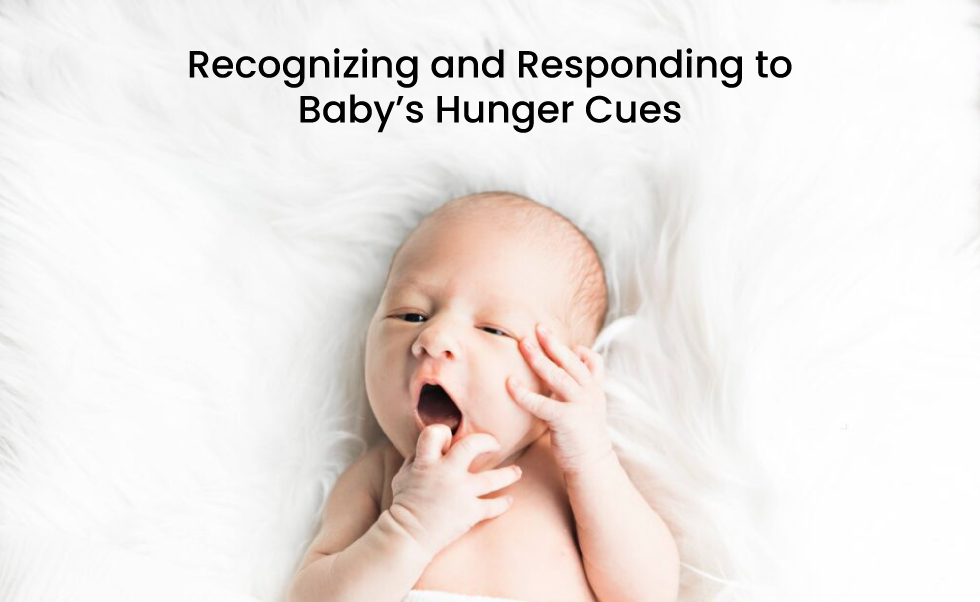Bringing a new life into the world is a joyous adventure, filled with a myriad of new and unfamiliar routines that parents must adapt to for the well-being of their baby. While activities like diaper changes, tummy time, and bath hours can be enjoyable, many parents, whether new or experienced, find feeding their children challenging.
Your baby’s major means of communication are body language and cries. Your baby will cry when hungry, full, overwhelmed, or in pain. Most of the time, crying is the last sign that our child shows something is wrong. There are subtle and detailed signs that they will give you. When it comes to feeding, recognize the following signs.
Recognizing your baby’s hunger cues
Babies of all ages respond differently and share signs of hunger cues, including the following: a brief, including cues.
Babies from Birth-5 months old
- Early hunger cues signs_when your child starts licking or smacking their lips, sucking their tongues, fingers, and lips. These indicators show that you may be thinking about food at that moment.
- Active signs_ Your baby will actively show that it’s hungry when it starts making significant movements toward what it knows and thinks could be food, such as grabbing the chest of whoever will hold it or the milk bottles. On top of that, your child will begin to be fussy, clench their hands, and often show a face of frustration.
When your baby actively seeks food, they will position themselves in a feeding posture they know.
Late signs
If you wait for your baby to cry for you to feed them, you’re way behind in responding. If the early and active signs of hunger are not present, when the baby becomes frustrated, it will start moving its head desperately and crying.
6 to one year
When your baby begins to make significant sounds, communication becomes easier. At this stage, babies can easily show that they are hungry and want to impulsively reach out to where food is.
Another sign you can look out for is your child opening their mouth when offered a spoon and getting excited at the sight of food.
Responding to your baby’s hunger cues

Always be alert and respond to all the cues from your baby, be it hunger, discomfort, or just the need to be held. You can never do too much or spoil your child. Immediately responding to their hunger cues will send a message that they can count on someone and increase the bonding between you and your baby.
Have a feeding pattern for your baby.
Strcty set specific times when your baby should be feeding; this will help you ensure that your baby is always on a full stomach.
If your baby is no longer paying attention or pushing the milk bottle or breast milk and catching an interest in something, it is a sure indicator that they’re satisfied.
Waking your child for feeding
Your newborn baby still does not have the sense of day and night, so they often sleep almost all the time. A normal and healthy infant sleeps for over 14 hours a day. Most parents can get confused, not knowing whether to wake them up for feeding.
Your baby’s stomach does not handle milk for too long, so after a few hours, around two or three hours, your baby will want to eat; if they are still sleeping, you can wake them up to feed
Knowing if your baby is feeding enough
Be it breast milk, bottled milk, or solid food, you can easily tell if your baby has enough of what you give based on their weight and diaper change frequency. A healthy baby has frequent diaper changes at least five times a day.
When you are satisfied with the feeding pattern of your child, there is no need to wake them up for food; let them set the pace at which they would love to be fed.
While the following tips are common, they can serve as a helpful guide. As a parent, your role in recognizing and responding to your child’s hunger cues is paramount. The most beneficial action you can take for your child’s feeding is to spend quality time with them, closely observe their behaviors, and identify any unique patterns they exhibit during feeding. Remember, becoming familiar with your child’s feeding pattern may take time, so be patient and allow yourself the opportunity to learn and understand your child.







